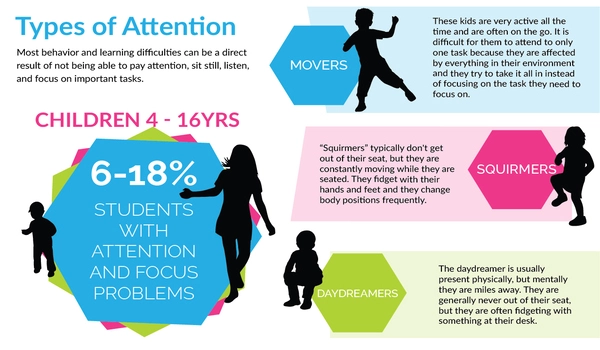A team of Nanyang Technological University, Singapore (NTU Singapore) academics has discovered new information about how chemicals secreted by brain cells regulate our attention span. The study’s findings could pave the door for novel therapies to treat neurological diseases associated with difficulty concentrating, such as depression and attention-deficit hyperactivity disorder (ADHD).
Neurotransmitters are substances released by neurons in the brain and nervous system that transport messages from one cell to another in order for them to communicate with one another. Neurotransmitters are essential for brain function and the regulation of all body activities, including breathing, heart rate, and reproduction.
These chemicals also coordinate cognitive processes that enable us to focus on important information within the constant barrage of stimuli the brain receives from the external environment, otherwise known as our attention span.
Our study advances our understanding of the claustrum’s role in directing attention span. Understanding how the claustrum governs attention span at the cellular level opens the door to other regions regulated by similar signaling pathways, such as arousal and learning.
Mr Aditya Nair
For a long time, researchers believed that human attention span was controlled by a single neurotransmitter, acetylcholine, which excites neurons and causes them to emit electrical signals. Recent research reveals that attention may require another neurotransmitter, gamma-aminobutyric acid (GABA), which decreases neurons’ ability to receive and deliver messages.
The team demonstrated for the first time in their study published in the Proceedings of the National Academy of Sciences (PNAS) that GABA works in concert with acetylcholine in a precise sequence to regulate the transmission of signals from the claustrum, a part of the brain’s information processing network.
Hidden deep in the brain, the claustrum is a thin sheet-like structure that receives and processes information from different parts of it. The claustrum helps to regulate concentration, but its exact role remains unknown.

Neurotransmitters toggle ‘like a switch’ to relay information
The NTU researchers explored how neurons in the claustrum of mice respond to acetylcholine and GABA produced by the forebrain, a portion of the brain that plays an important role in various brain activities.
Opogenetics is the main technological advancement that enabled the researchers to accomplish this discovery. Optogenetics is the use of light-sensitive proteins to control the activity of specific types of neurons in the brain. Light triggered the neurons in the forebrain that release acetylcholine and GABA in this circumstance, allowing the team to evaluate the claustrum’s reaction to such a stimulation.
They observed that acetylcholine and GABA cause opposing responses in two types of neurons in the claustrum that send output signals to separate sections of the brain. Acetylcholine stimulated neurons that extended to deep brain structures, whereas GABA inhibited neurons that extended to the brain’s surface.
The two neurotransmitters, like a switch, toggle the passage of information between the claustrum and the rest of the brain through this synchronized series of opposing actions. The research shows that neurotransmitters govern a “microcircuit” in the brain that helps the organ to distinguish vital information from noise, allowing a person to pay attention.
The opposing actions of the neurotransmitters (acetylcholine and GABA) on neurons in the claustrum enable brain signals to be encoded efficiently, allowing the brain to pay attention and ignore noise.
“Our study advances our understanding of the claustrum’s role in directing attention span,” stated first author Mr Aditya Nair, a former researcher at LKCMedicine and current Ph.D. student at Caltech. Understanding how the claustrum governs attention span at the cellular level opens the door to other regions regulated by similar signaling pathways, such as arousal and learning.”
“By understanding how acetylcholine and GABA work together to direct our attention,” said lead investigator and neuroscientist Professor George Augustine of NTU’s Lee Kong Chian School of Medicine (LKCMedicine), “new and more effective therapies may be developed in the future to improve the attention span of patients with conditions such as ADHD and depression.”
Dr Geoffrey Tan, Consultant (Psychiatry) Clinician-Scientist at the Institute of Mental Health Singapore, commented as an independent expert, “Directing attention and multi-tasking are critical cognitive processes for everyday functioning that require toggling between networks or circuits in the brain.” This study discovered a ‘switch’ in the claustrum that provides a way for acetylcholine to drive computations like these. It comes at an opportune time since we are increasingly incorporating brain networks into how we think about cognition, psychiatric illnesses, and even therapies like mindfulness.”
The project’s next steps will be to see how changing the dual-transmitter switch affects attention and brain illnesses that impair attention, such as ADHD. It will also be important to determine whether the switch mechanism applies to other brain processes, such as arousal and learning.





